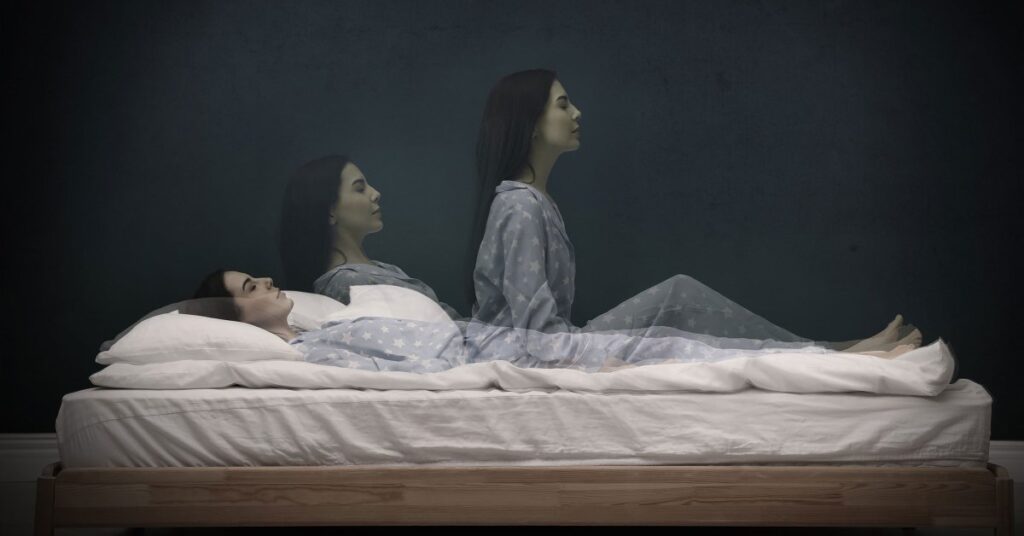Once, years in the past, I discovered myself in an ice-cold bathtub with no reminiscence of strolling to the toilet or operating the bathtub. One other time, I terrified my good friend by leaving our lodge room in the midst of the evening—then pounding on the door, demanding to be let again inside. Each occasions, I awoke in the midst of these weird incidents. I had been sleepwalking.
Sleepwalking, technically often called somnambulism, is as fascinating as it’s freaky. It’s a kind of parasomnia, an umbrella time period for uncommon behaviors that happen throughout sleep, akin to evening terrors and “sexsomnia,” when individuals interact in sexual exercise with out waking up. Ordinary sleepwalking is rare: a 2016 analysis evaluate estimated that just one.5% of adults had performed it within the earlier yr. However nearly 7% of adults have sleepwalked sooner or later of their lives, in accordance with the identical research.
The nighttime prospects are assorted and bizarre. A 2024 research within the Journal of Sleep Analysis showcased a variety of sleepwalkers’ reported experiences, together with waking up bare on a balcony at 5 a.m., crawling into the lounge on all fours, smearing on nearly a complete pot of pricy face cream, and filling a bowl of water and inserting it by the mattress for a dreamed-up canine.
What makes individuals rise from their beds to do all method of weird issues? Dr. Francesca Siclari, writer of that research and a researcher at Netherlands Institute for Neuroscience, says sleepwalking appears to occur when somebody is partially roused from deep slumber, leaving them in a “hybrid state” the place they’re “each asleep and awake,” able to performing some awfully unusual acts they won’t even bear in mind within the morning.
Learn Extra: The Stunning Well being Advantages of Ache
Researchers don’t absolutely perceive why some individuals slip into this limbo state when most individuals don’t. However sleepwalking tends to run in households, suggesting there’s a genetic element. Sure drugs, sleep problems, and different medical situations can even make somebody liable to sleepwalking, in accordance with the Mayo Clinic.
Children usually tend to sleepwalk than adults, maybe as a result of their brains are nonetheless creating, says Jennifer Martin, a behavioral sleep-medicine specialist and spokesperson for the American Academy of Sleep Medication. Youngsters additionally spend extra time every evening within the section of slumber when sleepwalking usually happens: the deep, restorative relaxation that comes earlier than fast eye motion and vivid dreaming, explains Dr. Sanford Auerbach, an affiliate professor of neurology at Boston College Chobanian & Avedisian Faculty of Medication. Most individuals outgrow sleepwalking by early maturity, however some revert again during times of stress or extended fatigue, Martin says.
Research help the hyperlink between sleepwalking and sleep deprivation. Siclari says it appears to occur when an over-tired particular person lastly falls right into a deep sleep, solely to be disturbed by noise, sound, or movement. It’s onerous to wake somebody from deep sleep, notably once they aren’t well-rested, in order that they don’t rise absolutely. However the interruption appears to be sufficient to alter mind exercise, generally leading to exercise just like what’s noticed throughout vivid goals, in accordance with Siclari’s analysis.
Sleepwalking isn’t inherently problematic, Auerbach says. “It’s not a nasty factor in your well being or factor in your well being,” he says. “It’s extra of an fascinating phenomenon” than an actual trigger for concern—though some analysis has discovered that sleepwalkers are extra possible than common snoozers to expertise fatigue, daytime sleepiness, and insomnia, suggesting the behavior could generally mess with the standard of sleep.
Learn Extra: 12 Bizarre Signs Endocrinologists Say You Ought to By no means Ignore
Extra regarding are the security points that may come up when somebody is up and about. Folks can journey or fall once they’re half awake, or worse: a affected person of Martin’s as soon as drove a automobile whereas sleeping, and a affected person of Auerbach’s fell off a second-story balcony. “Normally the issues individuals do once they’re sleepwalking are a lot less complicated behaviors,” Martin says, “however individuals generally do get themselves into hassle.”
When obligatory, clinicians generally prescribe small doses of sedative benzodiazepine drugs to discourage sleepwalking, Auerbach says. Stress discount can be useful, since sleepwalking tends to flare during times of tension, he provides.
Common sleepwalkers also needs to contemplate taking security precautions, like placing a gate on the prime of their stairs or putting in a safety system that makes noise if the entrance door opens, Martin says. She says it’s additionally value seeing a sleep specialist to rule out different situations, akin to REM habits dysfunction, which causes individuals to behave out their goals and can even result in inadvertent self-harm.
Lastly, for those who’re the bedfellow of a sleepwalker, you’ll have heard the parable that you simply’re not purported to wake them whereas they’re on the transfer. Martin says waking a somnambulist received’t hurt them, past some momentary confusion—however one of the best factor you are able to do for a wandering liked one is gently information them again to mattress for some traditional horizontal sleep.



